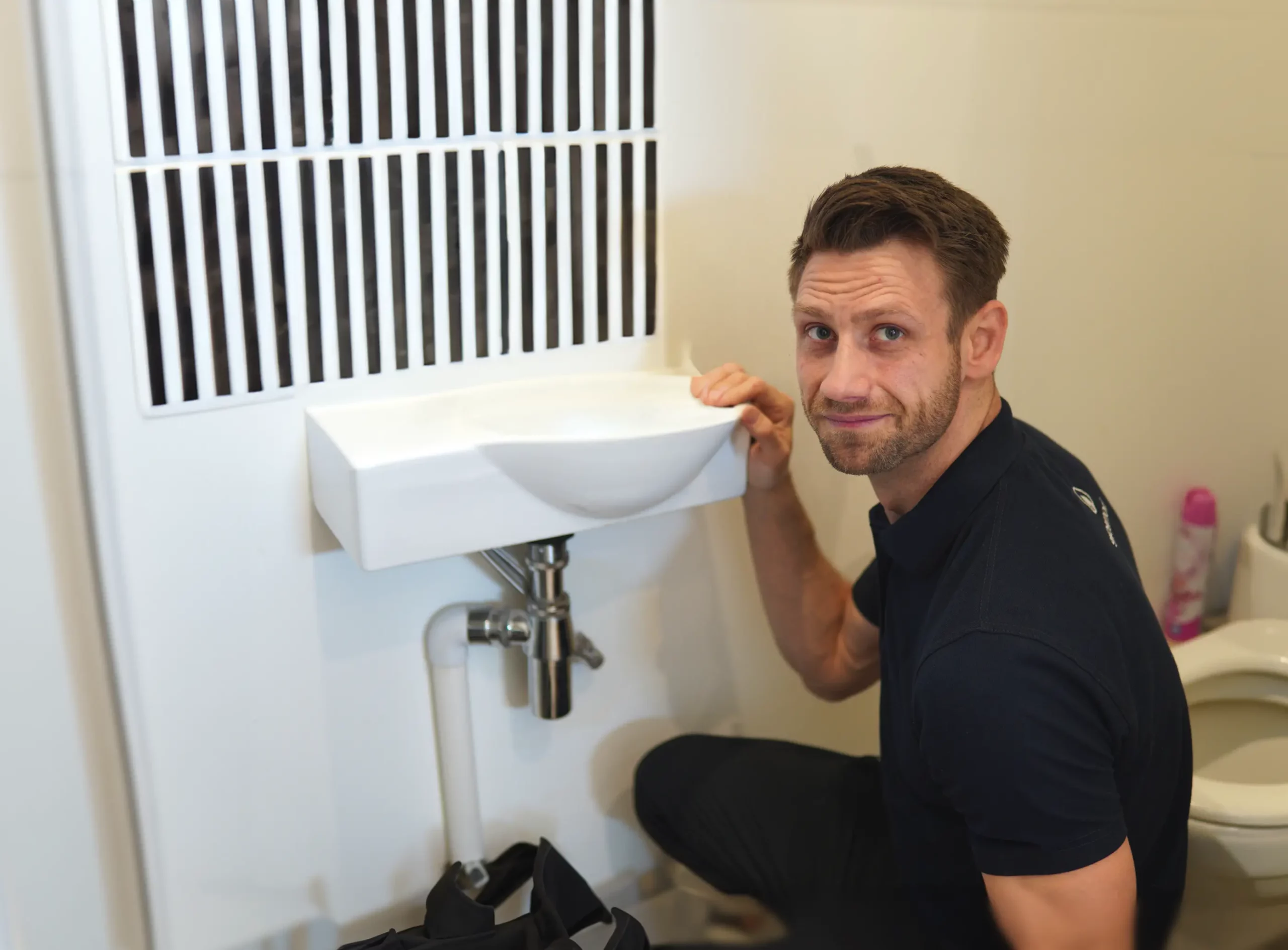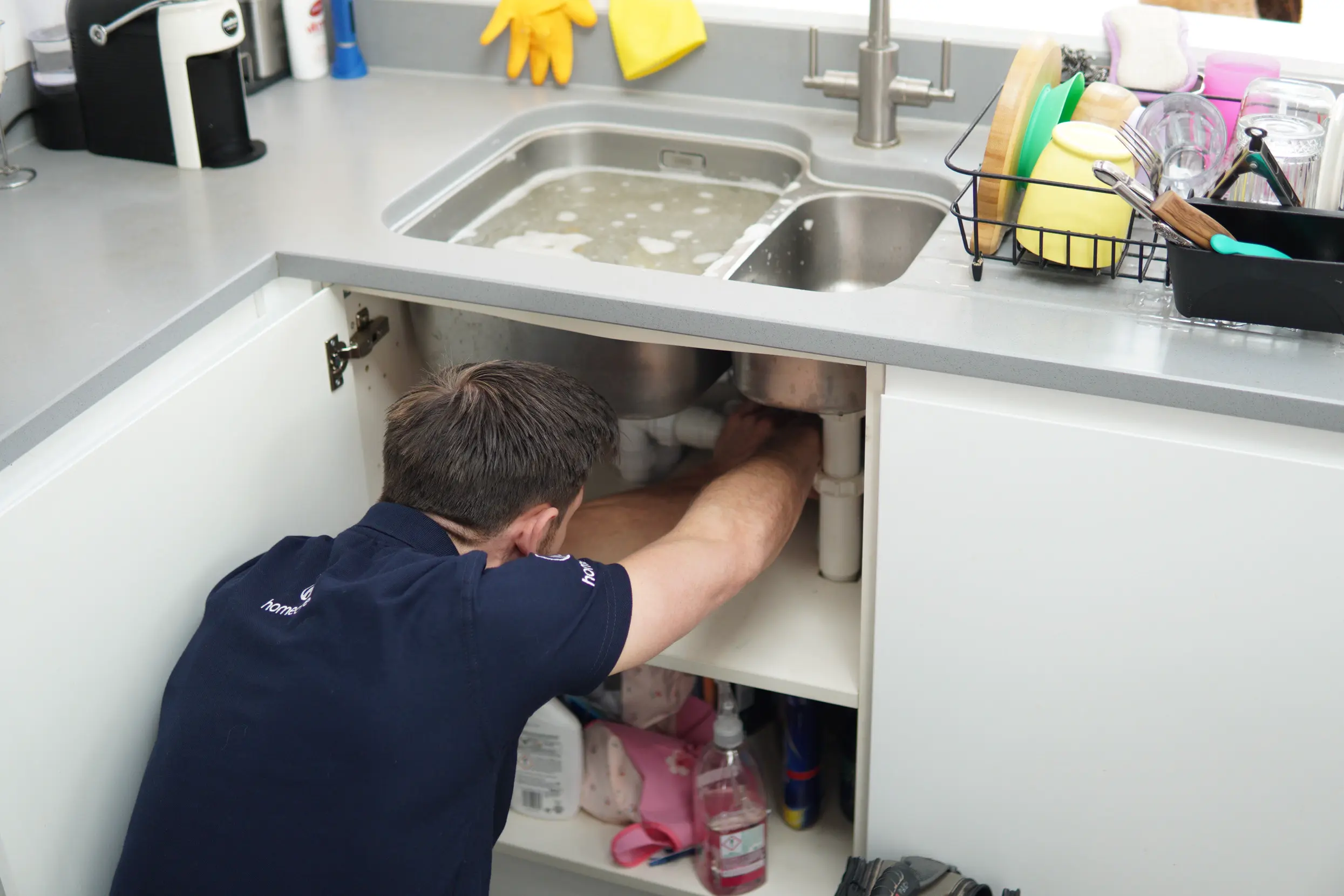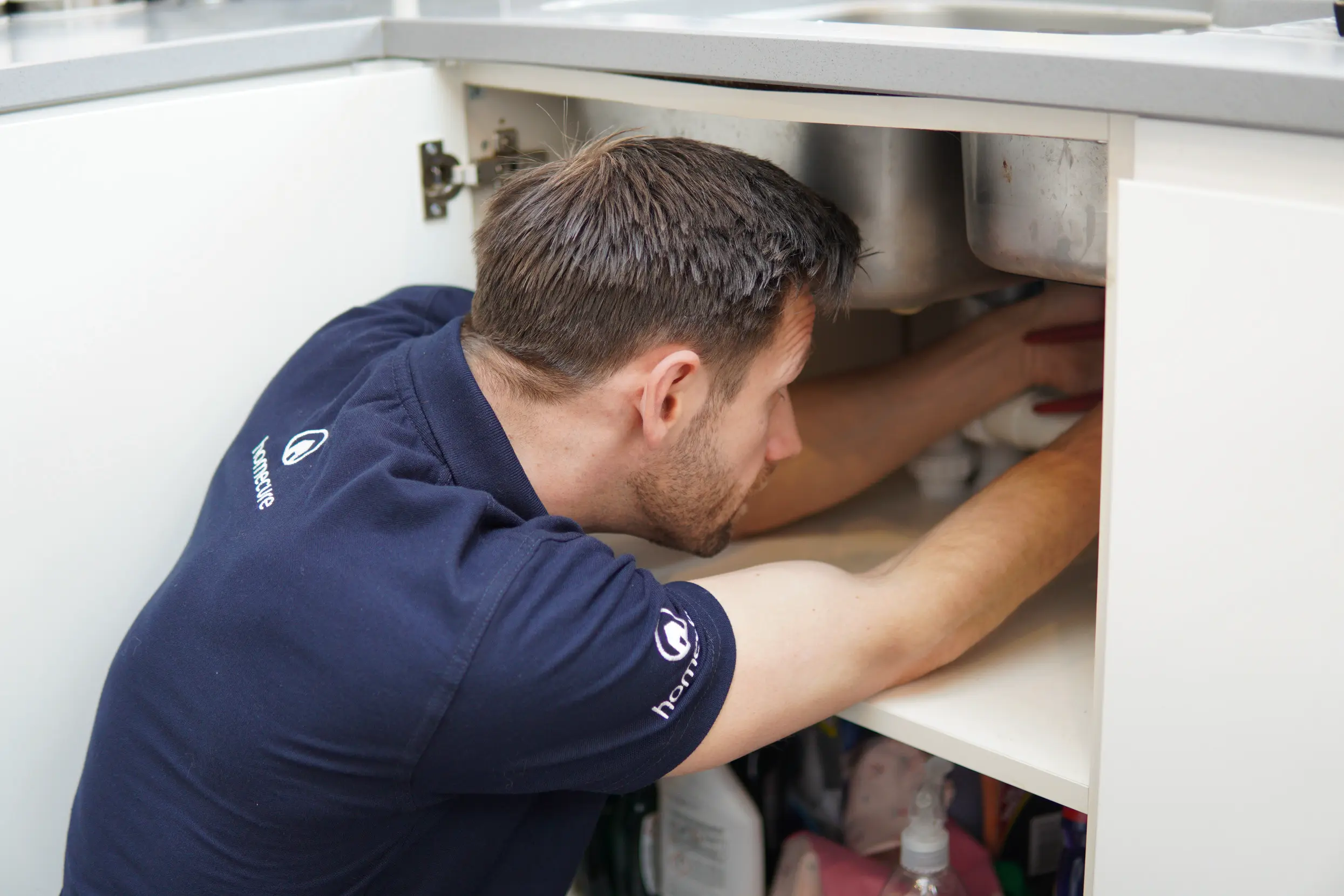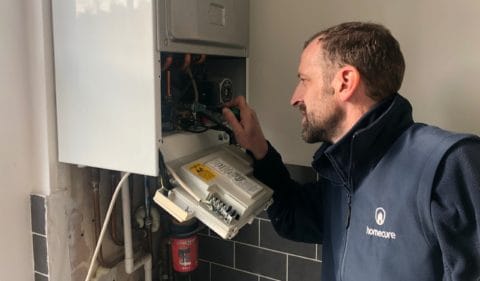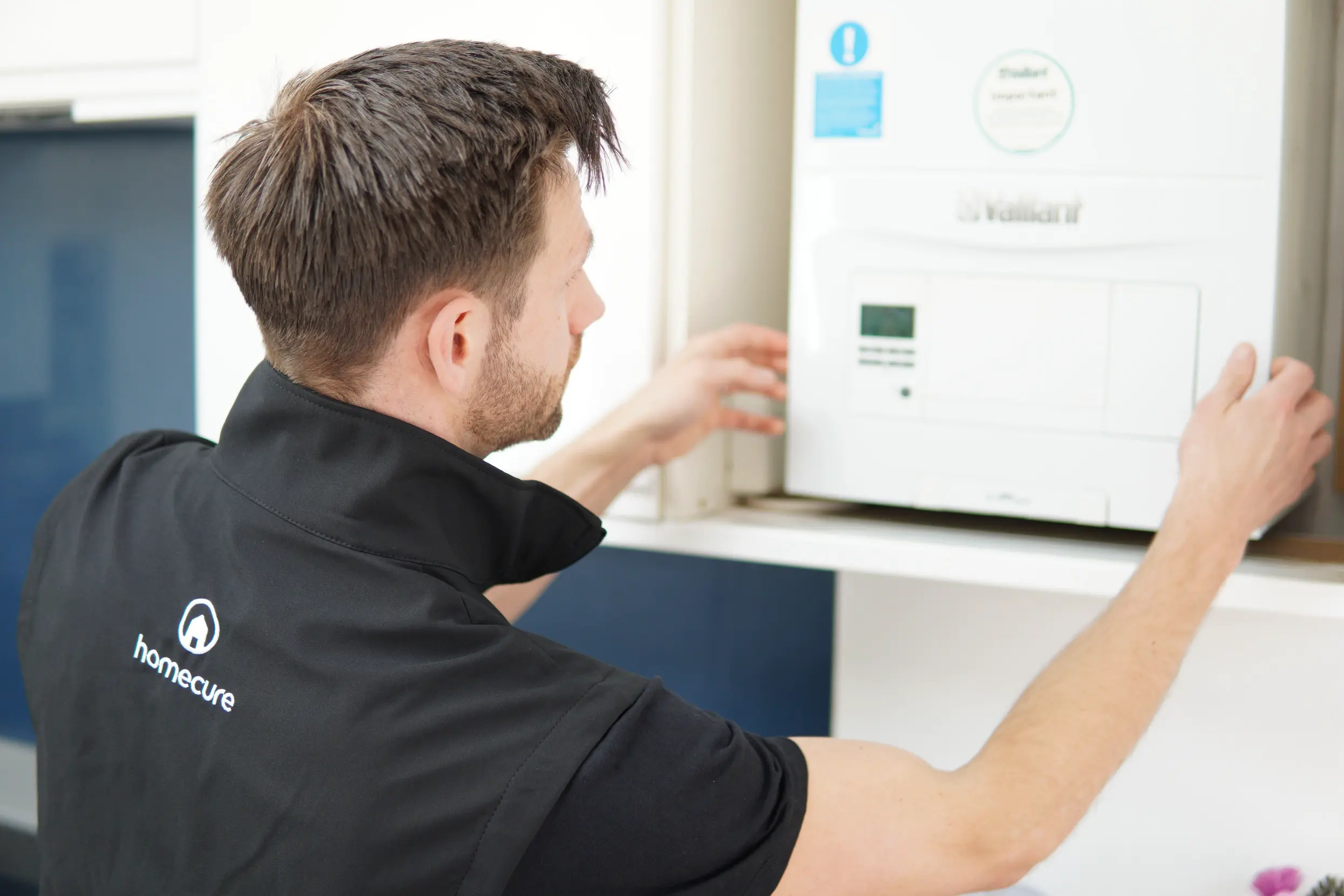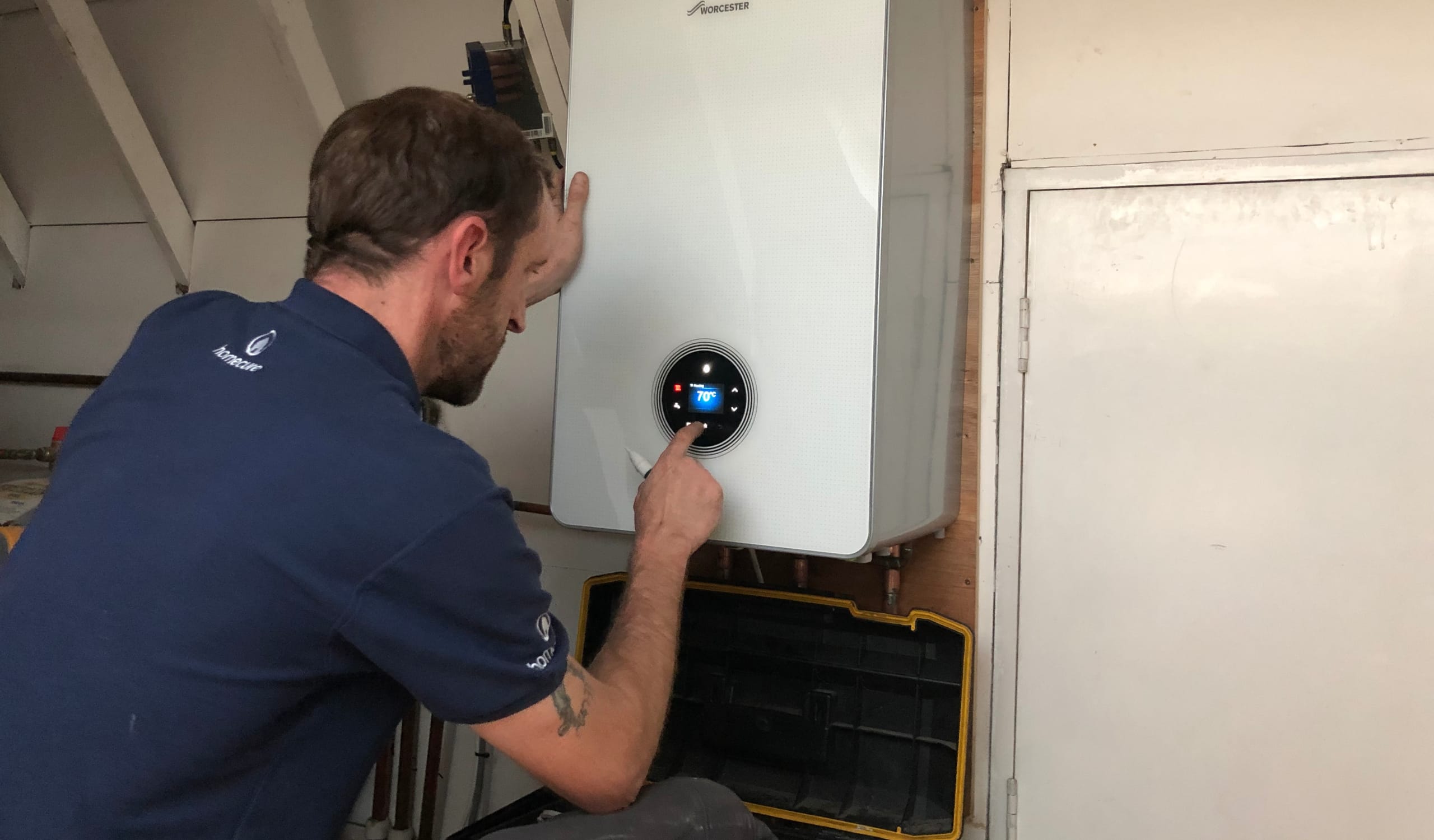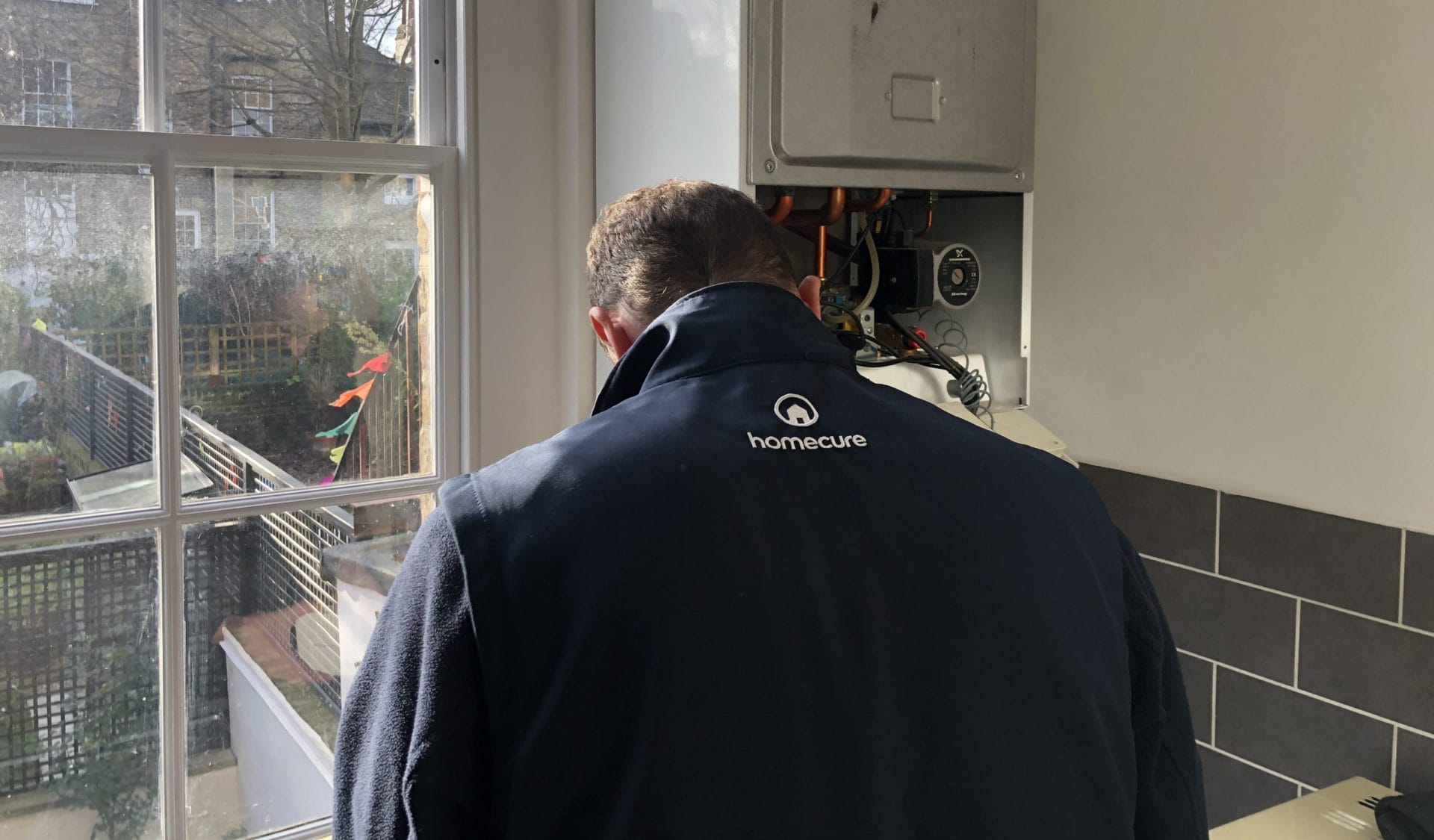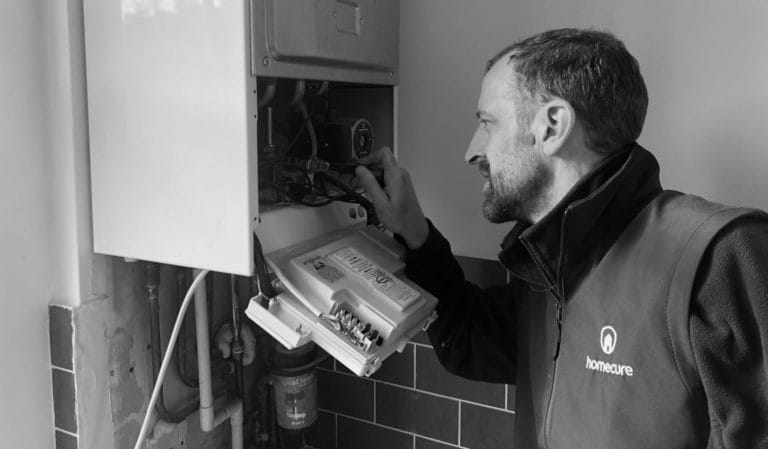What causes a boiler to lose pressure?
1. Leaky valves and pipes
Leaky valves and pipes in a boiler system can cause a drop in pressure, which can result in heating and hot water problems. It is important to identify and fix any leaks as soon as possible to prevent further damage to the system. Here are the steps to identify and fix leaky valves and pipes:
- Trace the pipework throughout your home, checking for any signs of leakage.
- Particularly check around the joints and bends of the pipes.
- If there are puddles or excessive amounts of water around your boiler, you could have a leak inside your boiler system. Check around the radiators where the pipework enters and leaves.
- If you find a leak, or need to top up the water pressure regularly, call a Gas Registered engineer for advice on how to fix the problem.
- Leaks in your system should be left to the professionals. You’ll need a Gas Safe engineer to reseal or potentially re-pipe your system where necessary.
It is important to maintain proper pressure in a boiler to ensure it runs efficiently and safely. Regularly checking for leaks and fixing them promptly can help prevent further damage to the system. Remember to always follow safety precautions and seek professional help when necessary.
2. Internal plumbing problems
Low boiler pressure can be caused by a variety of internal plumbing problems that may go unnoticed until it’s too late. It is important to understand the causes of low boiler pressure because it can lead to heating and hot water problems. Common internal plumbing issues that can cause low boiler pressure include leaks in the system, faulty pressure relief valves, and airlocks in the pipes. Leaks in the system can lead to a loss of water and pressure, while faulty pressure relief valves can cause the boiler to release water and lower the pressure. Airlocks in the pipes can also cause low boiler pressure because they prevent the water from flowing properly. It is important to address these issues promptly to prevent more serious problems from occurring.
3. Overloaded boiler
An overloaded boiler is a common issue that can cause the pressure in your boiler to drop. When your boiler is overloaded, it means that it is trying to produce more heat than it can handle, which can lead to a range of problems, including a drop in pressure. This happens because the water in the boiler is being heated too quickly, causing it to expand rapidly and put pressure on the system.
The first sign of an overloaded boiler is often a drop in pressure. This is because the excess pressure is being released through the safety valve, which is designed to prevent the boiler from exploding. Other signs of an overloaded boiler include loud banging noises coming from the boiler, leaks around the boiler, and a decrease in hot water or heating output.
If you suspect that your boiler is overloaded, it is important to take action as soon as possible. Continuing to use an overloaded boiler can cause serious damage to the system, including cracks in the boiler or pipes, which can lead to leaks and even more pressure drops. To fix an overloaded boiler, you may need to adjust the thermostat or the water pressure, or you may need to have the system serviced by a qualified heating engineer.
In summary, an overloaded boiler can cause the pressure in your system to drop, leading to a range of problems . Signs of an overloaded boiler include a drop in pressure, loud banging noises, leaks, and decreased hot water or heating output. It is important to identify and fix an overloaded boiler as soon as possible to prevent further pressure drops and potential damage to the system. If you are unsure how to address an overloaded boiler, it is recommended to consult with a qualified heating engineer.
4. Faulty pressure release valve
The pressure release valve is a crucial component in maintaining the pressure of a boiler system. Its primary function is to release excess pressure when it becomes too high, ensuring that the system operates safely. However, when this valve is faulty, it can result in a loss of pressure in the boiler system. There are several possible defects that can occur in a pressure release valve, including wear and tear, leaks, and blockages. If the valve is leaking, it will cause the pressure to drop just like any other leak in the system. If the valve is blocked, it can prevent the release of excess pressure, causing the pressure to build up and potentially damaging the system. In both cases, a loss of pressure will occur, and the boiler may stop working. Therefore, it is essential to inspect and maintain the pressure release valve regularly to avoid any potential hazards and ensure the smooth operation of the boiler system.
5. Failed heat exchanger
A failed heat exchanger can be a cause of boiler pressure loss. The heat exchanger is responsible for transferring heat from the burner to the water in the system. If the heat exchanger fails, it can cause a loss of pressure in the boiler system, as the water is not being heated properly. Without proper heating, the water cannot expand and maintain the necessary pressure in the system. This can lead to a number of issues, including no running hot water, radiators that won’t warm up, and a pressure gauge that has fallen. In order to fix this issue, a professional boiler technician will need to replace the faulty heat exchanger.
6. Mineral deposits
Mineral deposits can have a significant impact on the performance of a boiler, leading to a loss of pressure and reduced efficiency. These deposits are formed by the minerals that are naturally present in the water supply, which can accumulate over time and cause blockages in the system. Here is an ordered list of the types of mineral deposits that can accumulate in boilers:
- Calcium deposits: Calcium is a common mineral found in water, and when it accumulates in a boiler, it can form a hard, white substance known as limescale. This buildup can restrict the flow of water, reducing the efficiency of the system.
- Magnesium deposits: Like calcium, magnesium is also present in water and can form a hard, white substance when it accumulates in a boiler. This buildup can cause blockages in the system, reducing the flow of water and causing pressure loss.
- Iron deposits: Iron is often present in water supplies, and when it accumulates in a boiler, it can form a reddish-brown substance known as rust. This buildup can cause blockages in the system, reducing the flow of water and causing pressure loss.
These mineral deposits can cause pressure loss in a boiler by restricting the flow of water through the system. When the water cannot flow freely , it can cause blockages and reduce the pressure, leading to reduced efficiency and potentially damaging the system. The buildup of mineral deposits can also cause corrosion, which can further damage the system and lead to leaks.
Regular maintenance is essential to prevent mineral buildup and ensure the efficient operation of a boiler. This includes adding an appropriate amount of inhibitor to the water to slow down the chemical reaction between the water and the metal of the radiators. It’s also important to regularly drain and refill the system to remove any accumulated minerals and maintain the correct concentration of inhibitor. Additionally, using a water softener or a descaler can help to prevent the buildup of mineral deposits in the system.
In conclusion, mineral deposits can have a significant impact on the performance of a boiler by causing pressure loss and reducing efficiency. Regular maintenance is crucial to prevent mineral buildup and ensure the efficient operation of the system. By taking these steps, homeowners can avoid costly repairs and extend the life of their boiler.
7. Low water pressure
Low water pressure in boilers can cause a range of problems, including a lack of hot water, cold radiators, and even system shutdowns. This issue can be caused by a variety of factors, including leaks in the system, a faulty pressure relief valve, or air escaping from a radiator during bleeding. A drop in pressure can also occur if the system is not re-pressurized regularly.
To diagnose low water pressure, it’s important to check the pressure gauge on the front of the boiler. The gauge will typically show a hydraulic dial or a digital reading. Ideally, the gauge should read between 1 and 1.5 bars. If it reads less than 1 bar, the boiler pressure is too low and needs re-pressurizing. If the pressure continues to drop, it’s important to seek the advice of a registered Gas Safe Engineer.
To prevent low water pressure, it’s important to regularly check the pressure gauge and look for any signs of leaks in the system. This can include checking around pipes, radiators, and the boiler for water or damp patches. It’s also important to ensure that the pressure relief valve is functioning properly and that air is not escaping from radiators during bleeding.
In conclusion, maintaining proper water pressure in a boiler is essential for ensuring that the system operates efficiently and effectively. Regular checks and maintenance can help to prevent low water pressure and the associated problems that come with it. If you do experience low water pressure, it’s important to diagnose and address the issue promptly to avoid further damage to the system. By taking these steps, you can ensure that your boiler operates smoothly and provides reliable heating and hot water throughout the year.
8. Boiler Maintenance Issues
Boiler pressure loss can be caused by various maintenance issues, including leaks, faulty valves, bleeding radiators, and a damaged pump. Low boiler pressure is not dangerous but can be frustrating, especially during winter. To prevent further damage, it is crucial to re-pressurize your boiler when necessary and keep a close eye on its pressure levels. Regular maintenance check-ups and taking necessary measures, such as re-pressurizing, can prevent boiler pressure loss. If you encounter any issues with your boiler, seeking professional help is highly recommended. Remember, a well-maintained boiler can save you money in the long run.
9. Heating System Failure
Heating system failure can result in a loss of pressure in the boiler, which can cause the boiler to stop working or even become dangerous. Low boiler pressure can be caused by a variety of issues, including leaks, open valves, and bleeding radiators. In this article, we will provide an ordered list of the common causes of heating system failure that results in a loss of pressure in the boiler, explain each cause in detail, and highlight how it affects the boiler’s pressure. It is important to identify the cause before attempting to repressurize the boiler to avoid any further damage or danger.
- Leaks in the system: A leak in the heating system can cause the pressure to drop, leading to a loss of heat and hot water. The leak could be in a radiator valve or pipework, and it is important to locate and fix the leak before repressurizing the boiler. Failure to fix the leak could lead to further damage to the boiler and increased energy bills.
- Open valves: Open valves can also cause a loss of pressure in the heating system, leading to low boiler pressure. It is important to ensure that filling valves are not open or fixed tightly to prevent air or water from escaping.
- Bleeding radiators: Bleeding radiators can also cause a drop in pressure in the heating system. When air is released from the radiators, it lowers the pressure in the boiler system and can cause it to stop working. It is important to repressurize the system after bleeding radiators to ensure that the pressure is at the required level.
- Faulty parts: Faulty parts in the heating system can cause the pressure to increase, leading to a dangerous situation. This could be due to a fault in the pump, pressure relief valve, or other parts of the system. If the boiler is over 10 years old, it is more likely to experience faulty parts, and a professional should be consulted to fix the issue.
- Repressurizing too often: Repressurizing the heating system too often can also cause the pressure to be too high. If the pressure was recently repressurized, it may not be at the correct level. It is important to monitor the pressure regularly and only repressurize when necessary.
In conclusion, heating system failure can result in a loss of pressure in the boiler, which can cause it to stop working or become dangerous. Common causes of heating system failure include leaks, open valves, bleeding radiators, faulty parts, and repress urizing too often. Each of these causes affects the boiler pressure differently, and it is important to identify the cause before attempting to repressurize the system. Failure to fix the issue could lead to further damage and increased energy bills. Regular maintenance and monitoring of the heating system can help prevent these issues from occurring and ensure that the boiler runs smoothly. In case of any doubt, it is recommended to consult a professional to fix the issue and avoid any potential danger.
10. Environmental Factors
The pressure in a boiler plays a crucial role in its functioning and efficiency. Environmental factors such as temperature, air, and water levels can significantly impact a boiler’s pressure. A loss of pressure can lead to a range of issues, including reduced heating efficiency, increased energy consumption, and even boiler breakdowns. Common environmental factors that cause a boiler to lose pressure include air leaks, faulty parts, low water levels, and high system pressure. Regular monitoring of these factors is essential to ensure that the boiler maintains optimal pressure levels and operates safely and efficiently.
What to do before repressurising the boiler
1. Check the Boiler Repair Requirements
Before re-pressurising your boiler, it is important to check the boiler repair requirements to prevent any further damage. Here are the steps to follow:
- Turn off the boiler and wait for it to cool down.
- Check the manual or manufacturer’s website for instructions on how to re-pressurise your specific boiler model.
- Look for any warning lights or error codes on the boiler’s display panel that may indicate a fault.
- Check for leaks or signs of corrosion on the boiler, pipes and radiators.
- If you are unsure about anything, or if you notice any issues, call a Gas Safe-registered engineer to inspect and repair your boiler.
By following these steps, you can ensure that your boiler is in good condition and safe to use before re-pressurising it. Remember, regular maintenance and servicing by a qualified engineer is the best way to keep your boiler running smoothly and avoid costly repairs in the future.
2. Get a New Water Heating Appliance
Having a functional water heating appliance is essential for any household. It ensures that there is a constant supply of hot water for daily use. However, if you have been facing issues with your water heating appliance, it might be time to consider getting a new one. Here are some signs that indicate the need for a new water heating appliance:
- Frequent breakdowns: If your appliance requires frequent repairs, it might be time to invest in a new one.
- High energy bills: An old and inefficient appliance can lead to high energy bills. A new appliance can help reduce your energy consumption and save you money in the long run.
- Inconsistent water temperature: If you notice that the water temperature fluctuates frequently, it might be a sign that your appliance is no longer functioning properly.
If you’ve decided to get a new water heating appliance, here are some steps to take:
- Research different brands and models: Look for brands and models that have a good reputation for quality and reliability.
- Consider the size and capacity: Choose an appliance that is the right size and capacity for your household’s needs. A larger appliance might be needed for bigger households.
- Determine the type of fuel source: Consider the type of fuel source that is most convenient and cost-effective for your household. Options include gas, electric, and solar-powered water heating appliances.
- Compare prices: Compare prices of different models and brands to find the best value for your budget.
- Choose a reputable installer: Make sure to choose a reputable installer who is qualified and experienced in installing water heating appliances.
Investing in a new water heating appliance might seem like a big expense, but it can save you money in the long run. A high-quality and energy-efficient appliance can reduce your energy consumption and lower your bills. Additionally, a new appliance can provide consistent hot water and reduce the need for repairs. Overall, getting a new water heating appliance is a worthwhile investment for any household. So, take the time to research, compare, and choose the right appliance for your needs.
3. Check the Boiler Pressure Symptoms
In the section “Check the Boiler Pressure Symptoms” of the article “How to Repressurise a Boiler: A Step By Step Guide For Beginners”, it is explained that the first sign of a low-pressure boiler is if your heating or hot water isn’t working properly and that to find out for sure, you should check the water pressure gauge on the front of your boiler. The article lists the symptoms of low boiler pressure, such as having no heating or hot water, radiators not heating up properly, and the pressure gauge measuring as low. It also explains how to check the pressure of your boiler using the pressure gauge and what to look for in terms of the level of pressure. Additionally, the article advises on what to do if the boiler pressure has suddenly dropped or if it has dropped gradually over time, and what the possible causes could be.
4. Check the Boiler Manual
Before repressurising your Worcester Greenstar gas boiler, it is crucial to check the boiler manual for manufacturer-specific instructions. Here is a step-by-step process to follow when checking the manual:
- Locate the manual. The manual is usually provided with the boiler at the time of purchase. If you do not have it, you can usually find it online on the manufacturer’s website.
- Read the manual thoroughly. Make sure to read all the instructions carefully, paying attention to any warnings or cautions.
- Look for specific instructions on repressurising the boiler. The manual should have a section on how to repressurise the boiler, including the recommended pressure levels and any specific steps to follow.
- Check for instructional videos. Many manufacturers have instructional videos on their websites that provide a step-by-step visual guide on how to repressurise your boiler.
By following these steps and checking the boiler manual before repressurising your boiler, you can ensure that you are following the correct process for your specific boiler model, avoiding any potential damage or safety hazards.
5. Turn Off the Water Supply
Before re-pressurizing a boiler, it is crucial to switch it off and let it cool down for 4 to 6 hours. To turn off the water supply, find the concealed tray under the boiler and locate the key and slot. Insert the key into the slot, making sure it lines up with the ‘open padlock’ signal, then firmly push the key in and turn it to the ‘closed padlock’ sign. After this, turn the white square nut counterclockwise to fill the appliance with water until the pressure rises to 1.5 bars. Finally, turn the nut clockwise until the water stops and turn the key back to the ‘open padlock’ sign. It is important to note that if at any point you are unsure or concerned about your boiler system, it is best to consult a Gas Safe registered engineer. Always follow safety precautions and turn off the boiler before attempting any repairs or maintenance.
6. Bleed the Radiators
Bleed the Radiators
If you have been experiencing heating problems such as a ‘gurgling’ sound and cold radiator tops, bleeding your radiators can help release built-up air and fix the issue. However, bleeding radiators can also cause a loss in pressure in your boiler system. Thus, before repressurising your boiler, it is essential to bleed your radiators correctly.
To bleed your radiators, you will need a bleed key and a couple of towels or rugs to place under the radiators. First, switch off your heating and wait for the radiators to cool down. Then, locate the bleed valve on the radiator and use the bleed key to open it slowly. You will hear a hissing sound as air escapes, and water will begin to drip out. Once the water starts to drip, close the valve. Repeat this process for all the radiators in your home, starting from the lowest point and working your way up.
After bleeding your radiators, you may notice a loss in pressure in your boiler system. Don’t worry; this is normal. To repressurise your system, switch off your boiler and allow it to cool for 4 to 6 hours. Once it has cooled, check the filling loop hoses are secure and tighten them if necessary. If you are unsure where the filling point is located, consult a professional for advice.
When you locate the filling point, there should be a pressure gauge nearby to help with the filling process and prevent over-pressuring the system. The pressure gauge will show the pressure by numbers or coloured zones. Set the pressure to about 1 bar when the system is cold. As the temperature in the system rises, the pressure will increase as the heated water expands.
In conclusion, bleeding your radiators is an essential step in maintaining your central heating system. It can help release built-up air and solve heating problems. However, it can also cause a loss in pressure, so it is crucial to repressurise your boiler correctly. Remember to switch off your heating before bleeding and repressurising your system. Bleed one radiator at a time and repressurise as you go. If you are unsure about any step, consult a professional for advice.
7. Check the Contents of the Boiler
Before repressurising the boiler, it’s important to check its contents to ensure that there are no leaks or other issues. Follow these steps to check the contents of your boiler before repressurising it:
- Turn off the boiler and wait for it to cool down.
- Look at the pressure gauge on the front of the boiler to see if the pressure is too low or too high.
- Check the display panel on your boiler for any error codes or warnings.
- Inspect your home for any signs of leaks, such as water coming out from the safety discharge pipe on the outside of the boiler.
- If you suspect a leak, call a plumber to fix the problem before repressurising the boiler.
- If there are no leaks or other issues, you can proceed with repressurising the boiler by following the instructions in the manufacturer’s manual.
By following these steps, you can ensure that your boiler is in good condition before repressurising it, which can help prevent further damage or issues with your heating system.
8. Re-Pressurise the Boiler System
Re-pressurising a boiler is an essential task that you might need to perform if you have noticed a drop in pressure levels, which can cause the heating system to work ineffectively. However, before you attempt to re-pressurise, it is crucial to follow certain steps to ensure your safety and the safety of your heating system. In this guide, we’ll take you through step-by-step instructions on how to re-pressurise a boiler, including safety precautions, potential causes of low pressure, and the importance of following these steps.
9. Check the Pressure Gauge Reading
How to Check the Pressure Gauge Reading of a Boiler:
- Locate the pressure gauge on the front of the boiler. It can be either a hydraulic dial or a digital reading.
- Read the gauge to determine the current pressure of the boiler. If you have a digital gauge, the pressure is represented by bars. If the reading is less than 1 bar, then that is a sign that there is low pressure. If you have a hydraulic gauge, the gauge has two red sections, and sometimes a green one. When the needle drops to the left red section, the pressure of the appliance is too low. When it points to the right one, it’s way too high. The green section indicates the normal pressure you are looking for.
- If the pressure is less than 1 bar, then the boiler needs to be re-pressurised. Attempt to top up to 1 bar using the valve at the end of the hose.
- Once you have re-pressurised the boiler, check the pressure gauge reading once again to ensure that it has reached the desired level of 1.5 bars.
Conclusion:
It is important to check the pressure gauge reading of a boiler before re-pressurising it. This will help you to determine the current pressure level and ensure that it is within the normal range. Checking the pressure gauge regularly can also help you to identify any potential issues with your boiler, such as leaks or malfunctions, before they become more serious problems. By following these simple steps, you can maintain the proper pressure level in your boiler and ensure that it is working efficiently and safely.
10. Repeat if Needed
Before repressurising your boiler, it is vital to follow some necessary steps to ensure the safety of the system and yourself. These steps are essential to prevent any damage to your boiler and ensure that the repressurising process runs smoothly. In this section, we will outline the steps you need to take before repressurising your boiler.
Step 1: Turn off your boiler and wait for it to cool down. It is essential to switch off the boiler before repressurising it. This prevents any accidents that may occur due to hot water or steam.
Step 2: Check the filling loop and make sure that both ends are attached and secure. The filling loop is a small hose that connects the boiler to the mains water supply. It is essential to ensure that it is securely attached to prevent any leaks during the repressurising process.
Step 3: Open the two valves on the filling loop. You should hear the mains cold water entering the system. Keep the valves open until the pressure reading on your boiler gets to 1.5 bar.
Step 4: Close both valves on the filling loop, one at a time. It is essential to close the valves carefully to prevent any leaks or damage to the system.
Step 5: Switch the boiler back on. You may also need to press the reset button, depending on your boiler. It is crucial to follow the manufacturer’s instructions when switching on the boiler.
Step 6: Undo the filling loop, catching any water left in the loop. It is essential to remove any excess water from the filling loop to prevent any leaks or damage to the system.
Step 7: Clean and keep the filling loop in a safe place. After using the filling loop, it is essential to clean it thoroughly and store it in a safe place.
Step 8: Lock the internal filling key and make sure that the little white nut is also tightened. It is crucial to lock the internal filling key and tighten the white nut to prevent any leaks or damage to the system.
In conclusion, before repressurising your boiler, it is crucial to follow the necessary steps to ensure the safety of the system and yourself. These steps include turning off the boiler, checking the filling loop, opening and closing the valves, switching on the boiler, undoing the filling loop, cleaning and storing the filling loop, and locking the internal filling key. Following these steps will prevent any damage to your boiler and ensure that the repressurising process runs smoothly.
How to repressurise the boiler
Step 1: Locate the internal filling key
To locate the internal filling key of a boiler for repressurising it, follow these steps:
- Look for a small plastic covering that resembles a tray on the boiler. Remove it to locate the internal filling key.
- Next to the square manifold nut, you’ll find the key manifold keyhole. Insert your filling key into the key manifold.
- Figure out which symbol is which on the top of the manifold’s plastic, as it’s important to position the internal filling key the right way.
- Lock the internal filling key and make sure that the little white nut is also tightened.
- Turn the white plastic nut counterclockwise to fill the appliance with water.
- Locate the two white arrows on the key and turn them to line up with the open position of the manifold.
- Push the key inside and turn it to the closed position. Double-check if the key is completely pushed down.
- Turn both the manifold nut and the manifold key back to the locked position, remove the filling key and put it back in the tray underneath your boiler.
It is important to locate the internal filling key before attempting to repressurise the boiler because without the key, it is impossible to fill the appliance with water and bring it back to the recommended pressure level.
Step 2: Locate the arrows of the key
When repressurising a boiler, locating the two white arrows on the key is crucial for the procedure to be successful. These arrows are used to line up with the open position of the manifold, which is an essential part of the process. In this guide, we will provide an ordered list of steps to help you locate the arrows of the key.
Step 1: Find the key manifold keyhole
To locate the arrows of the key, you need to first find the key manifold keyhole. This is located next to the square manifold nut.
Step 2: Turn the key to the unlocked position
Once you have located the key manifold keyhole, turn the key approximately 45 degrees to the unlocked position.
Step 3: Identify the symbols
Next, you need to identify the symbols that are engraved next to each other on top of the manifold’s plastic. This will help you position the internal filling key the right way.
Step 4: Line up the arrows
Locate the two white arrows on the key and turn them to line up with the open position of the manifold.
Step 5: Push the key inside
Carefully push the key inside and turn it to the closed position.
Step 6: Double-check
Double-check if the key is completely pushed down, and ensure that the arrows are still lined up with the open position of the manifold.
In conclusion, locating the arrows of the key is a critical step when repressurising a boiler. It allows you to position the internal filling key correctly and ensures that the boiler is repressurised correctly. By following the steps above, you can easily locate the arrows of the key and complete the repressurisation process successfully. Remember to always double-check your work to avoid any potential issues.
Step 3: Find the manifold
When repressurising a boiler, it is important to locate the manifold. The manifold is a part of the boiler system where water enters and exits. To find the manifold, you need to look for two white arrows on the key and turn them to line up with the open position of the manifold. Then, push the key inside and turn it to the closed position. Next, locate the key manifold keyhole next to the square manifold nut and insert your filling key into it. You will find the symbols engraved next to each other on top of the manifold’s plastic. Make sure to figure out which symbol is which to position the internal filling key correctly. Once you have completed the repressurisation process, remove the filling key and put it back in the tray underneath your boiler. Carefully pull out the tray and remove the key attached to it. If you are unsure about any of these steps, it is recommended to contact a skilled local tradesperson for assistance.
Step 4: Locate the padlock symbols
To locate the padlock symbols on your boiler when attempting to repressurize it, follow these steps:
- Look for the small plastic covering that resembles a tray and remove it. This will allow you to locate the internal filling key.
- Next, locate the key manifold keyhole next to the square manifold nut and insert your filling key into the key manifold.
- Turn the key approximately 45 degrees to the unlocked position and locate the two white arrows on the key. Turn them to line up with the open position of the manifold.
- Carefully push the key inside and turn it to the closed position. Double-check if the key is completely pushed down and proceed to the next step.
- Look for the slot underneath the boiler and insert the key into the slot, making sure it lines up with the ‘open padlock’ signal.
- Firmly push the key in and turn to the ‘closed padlock’ sign.
- Finally, turn the white square nut clockwise so that water flows into the boiler, and keep this going until the pressure rises to 1.5 bars. Turn the nut clockwise until the water stops, and then turn the key back to the ‘open padlock’ sign.
Remember to switch off the boiler and wait for it to cool before attempting to repressurize it. Also, if you are unsure or concerned about your boiler system, it is best to call out a Gas Safe registered engineer than try to fix the issue yourself.
Step 5: Push the key into the manifold
It is crucial to maintain the correct pressure in a boiler for it to function efficiently. Step 5 of repressurising a boiler involves pushing the filling key into the manifold. Here’s what you need to do:
- Insert the filling key into the key manifold located next to the square manifold nut.
- Turn the key approximately 45 degrees to the unlocked position.
- Line up the two white arrows on the key with the open position of the manifold.
- Carefully push the key inside and turn it to the closed position.
- Double-check if the key is completely pushed down, and ensure that the white nut is tightened.
- Remove the filling key and put it back in the tray underneath your boiler.
After completing step 5, it is essential to check the pressure gauge to ensure that the pressure has risen to 1.5 bars. It is crucial to follow these steps carefully to avoid any mishaps.
Step 6: Let water into the appliance’s system
Re-pressurizing your boiler is an essential step in maintaining its efficiency and functionality. To let water into the boiler’s system and re-pressurize it, follow these steps:
- Switch off the boiler and allow it to cool down.
- Find the filling loop – a flexible, silver pipe with a valve at either end – and double-check that it’s securely attached to the boiler’s pipes.
- Open up both valves so that they’re in line with the pipe to allow cold mains water into the system. You should be able to hear it.
- Wait for the water pressure to reach between 1 and 1.5 on the pressure gauge.
- Once it has, shut off both valves one after the other.
- Switch the boiler back on and, if needed, press the reset button.
- Undo both ends of the filling loop and remove from the pipes, being careful to catch any water spillage. Remember to keep the loop in a safe place.
It is important to ensure that both ends of the filling loop are securely attached and that the pressure gauge does not exceed 1.5 bar. If you are unsure about any of the steps or encounter any issues, it is best to call a Gas Safe registered engineer. Remember that not all boilers are compatible with a filling loop, so always check the manufacturer’s booklet for your boiler before starting. Ensuring that your boiler is properly pressurized can help maintain its efficiency, reduce energy costs, and prevent potential damage or breakdowns.
Step 7: Check the pressure gauge
Checking the pressure gauge is an important step in repressurising a boiler as it ensures the appliance is working properly. To check the pressure gauge, first, locate it on the front part of the boiler. There are different types of pressure gauges, such as digital and hydraulic gauges. If it is a digital gauge, the pressure is represented by bars, and if it indicates less than 1 bar, there is a pressure issue. For a hydraulic pressure gauge, the gauge’s needle will point to the red section if the pressure is too low and the right red section if it is too high. If the gauge is in the red warning area, repressurise the boiler by turning off the power, removing the white tray located below the boiler, fitting the white key inside the black hole manifold, turning the key to the locked padlock position, and turning the white plastic screw nut anticlockwise. Double-check the pressure gauge readings and turn off the valves if the pressure reaches 1 bar.
Step 8: Locate and contact customer service
If you are experiencing difficulty repressurising your boiler, the first step is to locate and contact customer service for assistance. Follow these steps to do so:
- Visit the website of the company that installed your boiler.
- Look for a “Contact Us” or “Customer Service” section on the website.
- Check if there is a phone number or email address provided for customer service.
- If there is no contact information available, try searching for the company on Yell.com to find their contact details.
- Once you have the contact information, reach out to customer service and explain the issue you are experiencing.
It is important to note that if you are unsure about what to do or if the problem is complex, it is recommended that you contact a skilled local tradesperson for assistance. Repairs to boilers can be dangerous and should be handled by a professional. Seeking professional help can ensure that the problem is resolved safely and effectively.
Step 9: Take a look at common problems and solutions
When repressurising a boiler, it is important to be aware of common problems that may occur and their solutions. These problems may include low water pressure, leaks, and airlocks. Low water pressure can be solved by opening the filling loop and allowing the water to enter the system until the pressure gauge reaches the desired level. Leaks can be identified by checking for visible signs of water around the boiler and fixed by tightening any loose connections or replacing damaged pipes. Airlocks can be resolved by bleeding the radiators and releasing any trapped air. It is crucial to refer to the appliance manual for specific instructions and to seek professional help if the problem persists. Remember, safety is always a top priority when dealing with boilers.
FAQ
What is the process of repressurising a boiler?
Maintaining the correct pressure in a boiler is crucial for its proper functioning and efficiency. Low pressure in a boiler can lead to reduced heating and hot water output or even cause the boiler to shut down. Therefore, it is important to know how to repressurise your boiler when necessary.
Before attempting to repressurise your boiler, it is important to check the manual that came with your boiler, as each boiler pressure system is different. You should also visit your boiler brand’s website to see if they have any helpful tutorials or videos about topping up pressure on their systems. If you are ever unsure or don’t feel comfortable repressurising a boiler yourself, always call a Gas Safe registered engineer to help you.
Here are the general steps to repressurise a boiler:
- Turn off the boiler and allow it to cool.
- Find the filling loop, which could be either ‘built in’ or ‘external’.
- Make sure you can see the boiler pressure gauge while using the filling loop.
- Open the valves on both sides of the filling loop to let water into your system.
- Wait until the pressure gauge reaches 1.5 bar, then close each valve, one after the other.
- Switch your boiler back on and, if needed, press the reset button.
- Remove the filling loop if it’s an attachment, being careful in case there’s any water left in it.
If your boiler has a keyless internal filling loop, all you need to do is locate the blue lever at the bottom of your boiler, pull it, and wait for the pressure to rise. Once your boiler reaches a pressure of 1.5 bars, let go of the lever.
It is important to note that the entire heating system needs to cool before work can be carried out on it, so always turn off the boiler before attempting to repressurise it. Additionally, be careful when using the filling loop and make sure to close the valves properly to avoid any leaks or damage to the system.
In conclusion, repressurising your boiler is a simple process that can be done with a few simple steps. However, it is important to follow the manufacturer’s instructions for your specific boiler model and to seek professional help if unsure. By maintaining the correct pressure in your boiler, you can ensure its proper functioning and efficiency.
How do I check the pressure of my boiler?
Maintaining the correct pressure in a boiler is crucial for its efficient and safe operation. Here’s a step-by-step guide to checking the pressure of your boiler:
- First, ensure that the boiler is off and cool. Locate the pressure gauge on the front of the boiler. There are two types of gauges: digital and hydraulic.
- If your boiler has a digital gauge, it will display the pressure in bars. If the reading is less than 1 bar, then the pressure is too low.
- If your boiler has a hydraulic gauge, it will have a dial with red and green sections. The green section indicates the standard operating pressure, while the red sections indicate the maximum safe operating pressure and low pressure. If the indicator needle is in the green section, then the pressure is at the correct level. If it’s in the red section on the left-hand side, then the pressure is too low.
- If the pressure is too low, then the boiler needs to be repressurized. This can be done by using the filling loop, which is a flexible hose that connects to the boiler. Open the valves on either end of the filling loop and allow the water to flow into the system until the pressure gauge reads between 1 and 1.5 bars.
- Once you’ve repressurized the boiler, close the valves on the filling loop and turn on the boiler. Check the pressure gauge again to ensure that the pressure is at the correct level.
Regularly checking the pressure of your boiler is important to prevent damage or malfunction. It’s recommended to check the pressure at least once a month to ensure that it’s at the correct level. By following these simple steps, you can maintain the efficiency and safety of your boiler.
What parts do I need to repressurise a boiler?
To repressurise a boiler, you will need to have the following parts:
- Boiler instruction manual or internet search to find instructions specific to your boiler model
- Filling loop (either built-in or external)
- Boiler pressure gauge
- Valves on both sides of the filling loop
- Power off to the boiler
It is important to have all these parts available before attempting to repressurise your boiler. Without them, you may not be able to properly repressurise the boiler, which could lead to further problems. Always consult your manual or manufacturer’s website for specific instructions and if you are unsure or uncomfortable with repressurising your boiler, call a Gas Safe registered engineer for help.
What causes a boiler to lose pressure?
Boilers losing pressure is a common occurrence that can lead to a lack of hot water and heating. It’s important to understand the causes of pressure loss in boilers to ensure that they function correctly. The most common reasons for pressure loss in boilers are leaks in the system and bleeding radiators. Leaks can occur anywhere in the system, including pipes, radiators, and the boiler itself. Bleeding radiators can also lead to a loss of pressure. A sudden drop in pressure may indicate a more serious problem. If the pressure drop is gradual, it may be due to a small and barely perceptible leak. To identify the cause of pressure loss, it’s important to check for damp patches near the radiators, pipes, and boiler. If a leak is found, an engineer can fix the problem. If not, calling an engineer to help find the problem can save time, stress, and cost in the long run. In summary, pressure loss in boilers is caused by leaks or bleeding radiators, and it’s important to identify and fix the problem to ensure that the boiler functions correctly.
How do I know if my boiler needs to be re-pressurised?
Maintaining the correct pressure level in your boiler is crucial for the efficient and safe operation of your heating system. To determine if your boiler needs to be re-pressurised, you should keep an eye on the pressure gauge and check it regularly. If the needle on the gauge drops below 1 bar, it’s an indicator that water has been lost from the system and needs to be replaced. If you find yourself re-pressurising your boiler frequently, it may be a sign of a leak, and you should contact a professional to fix the issue. It’s important to act proactively and address any issues with your boiler as soon as possible to prevent potential damages and ensure the longevity of your heating system. Remember to turn off the power to the boiler before re-pressurising and follow the manufacturer’s instructions carefully.
How do I find a qualified boiler repair technician?
If you are experiencing issues with your boiler, it is crucial to find a qualified technician to handle the repair. Here are some steps to follow when searching for a technician:
1) Check for certifications: Look for a technician who is certified by a recognized organization such as Gas Safe. This ensures that they have the necessary skills and knowledge to handle the repair safely and effectively.
2) Look for experience: Find a technician who has experience in repairing boilers. Experienced technicians are more likely to identify the problem quickly and offer a solution.
3) Check for customer reviews: Look for reviews from previous customers to gauge the technician’s quality of work and customer service. Positive reviews indicate that the technician is reliable and provides quality service.
4) Ask for referrals: Ask friends and family for referrals to reliable technicians they have used in the past. Referrals from people you trust can help you find a technician who has a good reputation.
It is important to prioritize safety when choosing a technician. A qualified technician will ensure that the repair is done safely and effectively, minimizing the risk of accidents or further damage to the boiler. In conclusion, finding a qualified technician is crucial to ensure that your boiler is repaired safely and effectively, and to avoid any further damage or accidents.
What safety precautions should I take when repressurising a boiler?
Re-pressurising a boiler can be a simple task, but it’s essential to follow safety guidelines to prevent any accidents. Here are three safety measures that must be adhered to when re-pressurising a boiler:
- Turn off the power supply: Before re-pressurising your boiler, ensure that you turn off the power supply to the boiler. This can be done by switching off the electrical power switch or unplugging the boiler from the power outlet. This will prevent any electrical accidents while re-pressurising the boiler.
- Wait for the boiler to cool down: It’s crucial to wait for the boiler to cool down before re-pressurising it. This will prevent any accidents due to hot water or steam. It’s recommended to wait for at least an hour after turning off the boiler to allow it to cool down.
- Use the correct filling equipment: It’s essential to use the correct filling equipment when re-pressurising the boiler. Always follow the manufacturer’s instructions and use the recommended filling key or loop. Using the wrong equipment can damage the boiler and cause accidents.
In conclusion, it’s crucial to follow safety guidelines strictly when re-pressurising a boiler. Turning off the power supply, waiting for the boiler to cool down, and using the correct filling equipment are three important safety measures that must be adhered to. These measures will prevent any accidents and ensure that the re-pressurising process is carried out safely. It’s important to always refer to the manufacturer’s instructions and take the necessary precautions to avoid any accidents. Safety should always be a top priority when dealing with any heating appliance.
Can I repressurise a boiler myself?
Yes, a homeowner can repressurise their boiler on their own using a filling key or filling loop, depending on the age and type of boiler they have. However, it’s important to check the manual that came with the boiler or the manufacturer’s website for specific instructions and precautions, as each boiler pressure system is different. If unsure or uncomfortable with the process, it’s best to call a Gas Safe registered engineer for assistance.
How often should I have my boiler checked?
It is important to have your boiler checked annually by a certified gas safe engineer. Here are some reasons why regular checks are essential:
- Safety: A boiler that is not functioning correctly can be dangerous, especially if there is a gas leak. Regular checks can detect any faults or leaks and ensure that your boiler is safe to use.
- Efficiency: A boiler that is not working efficiently will use more energy and cost you more money. Regular checks can identify any issues that may be affecting the efficiency of your boiler and help you save on energy bills.
- Longevity: A well-maintained boiler is likely to last longer than one that is neglected. Regular checks can help identify any potential problems early on, giving you the opportunity to fix them before they become major issues that require costly repairs or replacements.
- Warranty: Many boiler manufacturers require that the boiler is serviced annually to maintain the warranty. Regular checks can ensure that you comply with the manufacturer’s requirements and keep your warranty valid.
In summary, regular checks are crucial for the safety, efficiency, and longevity of your boiler. It is recommended to have your boiler checked annually by a certified gas safe engineer to ensure that it is functioning correctly and to prevent any potential problems.
What is the average cost of repressurising a boiler?
The cost of repressurising a boiler varies depending on several factors, such as the type of boiler, the severity of the issue, and the location of the boiler. Typically, the cost can range from £75 to £150. The type of boiler is a significant factor, as some boilers require more complex systems to repressurise. For instance, a combi boiler may cost more to repressurise than a conventional boiler. Additionally, the severity of the issue can impact the cost, as a more significant leak or problem may require more time and resources to fix. The location of the boiler can also influence the cost, as a boiler located in a hard-to-reach area may require more labour to access. In conclusion, the cost of repressurising a boiler can vary, and it is essential to consider these factors when determining the cost.

Available 24/7, 365 days
City & Guilds trained plumbers
Friendly and helpful service
Fully qualified and insured engineers
Available round the clock support
Ability to deal with any brand or type
Reach us 24/7, 365 days
We’ll get to you within an hour
Repair and install a variety of heating systems
